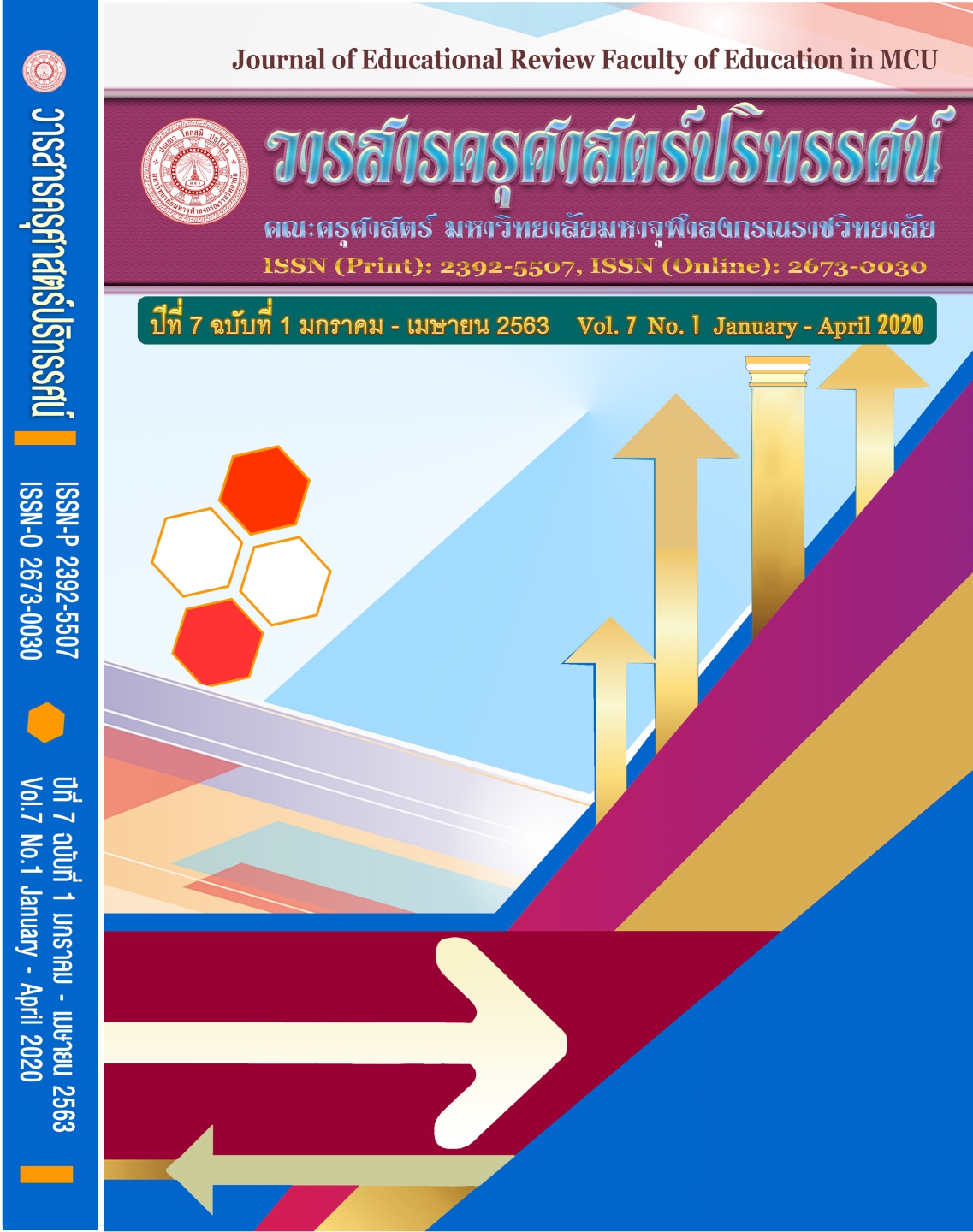ANCIENT RELIGIOUS SITES MANAGEMENT FOR CULTURAL TOURISM IN NORTHEAST REGIONS OF THAILAND
Main Article Content
Abstract
The objectives of this research were 1) to study temples with ancient sites in the lower northeast provinces of Thailand, 2) to study the management of temples with ancient sites in the lower northeast provinces of Thailand, and 3) to propose management guidelines temple with ancient sites to be a cultural tourist attraction in the lower northeast provinces. Qualitative research was conducted that consisted of documentary study, interview, and focus group discussion. Research tools were open-ended interviewed form and questions for focus group discussion. Data were collected by interviewing 20 experts, and about 20 people were attending focus group discussion. Data were analyzed by using content analysis. Results indicated that 1) temples with ancient sites in the temple in the lower northeast provinces of Thailand found that it was located at Surin Castle, Wat Pa Khao Noi Buriram province, and Prasat Sa Kamphaeng Yai Yai, Sisaket Province. These 3 areas are all temples that have problems with the management of temples both in terms of location and management as well as being a representative of temples that tried to manage temples with ancient sites for cultural tourism. 2) The management of temples with ancient sites in the lower northeast provinces of Thailand found that the abbots and the committee of the Fine Arts Department, field trips and academic should have particular roles for managing temples with ancient sites to be a cultural attraction. Activities can be made together by seeing that it is a local treasure together and has value for society as a nation until the realization of love and cherish. 3) Management of temples with ancient sites in the temple to be a tourist attraction in the culture should be joined by many parties. Abbot should have relevant knowledge in the history of the ancient monument, and the management of the M4 is connected. Trust and activities should also be created to connect with many parties. There are a few guides in providing knowledge and understanding to tourists and coordinate with the Art Department that should have a visual media to promote the tourists to visit the temple more understanding and should have light, sound or tradition activities in order to preserve the remains of the society as well.
Article Details
ทัศนะและความคิดเห็นที่ปรากฏในบทความในวารสารฉบับนี้ถือเป็นความรับผิดชอบของผู้เขียนบทความนั้นเพียงผู้เดียว และไม่ถือเป็นทัศนะและความรับผิดชอบของกองบรรณาธิการ
กองบรรณาธิการขอสงวนสิทธิ์ในการคัดเลือกบทความลงตีพิมพ์และจะแจ้งให้เจ้าของบทความทราบหลังจากผู้ประเมินบทความตรวจอ่านบทความแล้ว
ต้นฉบับที่ได้รับการตีพิมพ์ในวารสารครุศาสตร์ปริทรรศน์ คณะครุศาสตร์ มหาวิทยาลัยมหาจุฬาลงกรณราชวิทยาลัย ถือเป็นกรรมสิทธิ์ของคณะครุศาสตร์ มหาวิทยาลัยมหาจุฬาลงกรณราชวิทยาลัย ห้ามนำข้อความทั้งหมดหรือบางส่วนไปพิมพ์ซ้ำ เว้นเสียแต่ว่าจะได้รับอนุญาตจากมหาวิทยาลัยฯ เป็นลายลักษณ์อักษร
References
Bake, Chris. (2005). A History of Thailand. Cambridge University: Cambridge University Press.
D’mello. (2008). Foundation of social theory. Cambridge, Mass: Harvard University Press.
Galvani. (2005). The new job of the federal executive. Public Administration Review.
Hammon, Organization. (2000). Theory for public administration, Boston: Little, Brown and Company. Bangkok: Chulongkorn University Press.
Mektrairat, Nkarin. (2004). The Encyclopedia of local administration chapter 1 on basic principle, section 1 on decentralization and local governance. Nonthaburi: Prapokklao Institude.
Monisha Chattopadhyaya. (2006). Religious Tourism: An Introduction, Religion and Tourism – Perspective’. Hyderabad: ICFAI University Press.
Office of the National Museums. (2009). Guide to Surin National Museum. The Fine Arts Department, Ministry Of Culture.
Ratanakomut. (2006). Social Research Methods. New York: Oxford University Press.
Shabbir; D'Silva, Joyce. (2011).eds. Sustainable Agricultural Development: Recent Approaches in Resources Management and Environmentally-Balanced Production Enhancement. Springer Science & Business Media.
Thamrongrak Ampon K. (2012). Public Governance: Public management in 21st Century. Bangkok: Thammasat University Press. (In Thai).
Udom Tumosit. (2008). Modern local administration: Lessons of developed countries. Bangkok: National Institute of Development Administration.
Vail, Peter. (2007). Thailand's Khmer as 'invisible minority': Language, ethnicity and cultural politics in north-eastern Thailand. Bangkok: River Books.
Yima. Buchori. (2007). Thailand’s local administration. Bangkok: Chulongkorn University Press.


